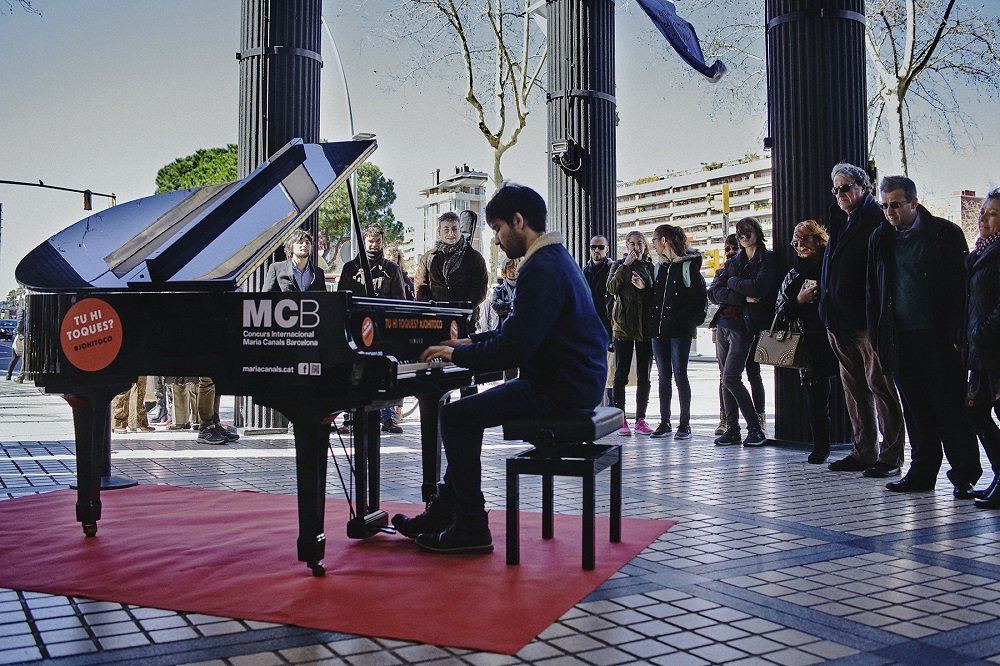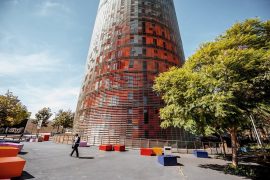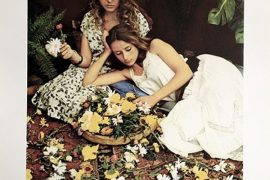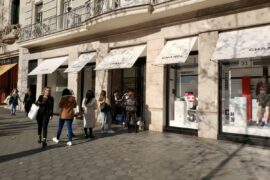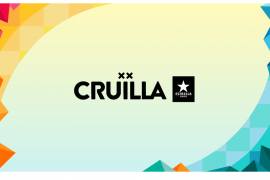Carles Santos, a recently disappeared artist, managed to astonish passers-by in 1971 by dragging a grand piano up La Rambla, and again in 2009, when he was dragged down la Rambla pushed by other people while playing frantically, with a lightly dressed couple being affectionate with each other on the instrument’s lid. Without it being a performance, the decision to install the same instruments around urban spaces for them to be freely used (from March 3 to 19), with a musician’s advice who acts as a facilitator, is part of the promotional events for Maria Canals International Competition. These installations seek to promote the public’s interaction with these instruments, taking advantage of the paradox that makes pianos such identifiable elements by most people, yet so unknown when it comes to using and enjoying them.
Few arts are more universally enjoyable -and with less means- than music. Today, there are many affordable (less than a ticket for the cinema) options to enjoy live music, or thanks to the recent implementation of a “reverse ticket office”, which make listeners responsibly choose, according to their own criteria, the price of the ticket to the concert they have just attended.
More and more initiatives are trying to make music truly public heritage, oblivious to the outdated stereotypes that see it (in classical music, or any other genre different from the ubiquitous pop) as something for people with training or a special sensitivity. That is what the Maria Canals Music Competition for piano in its 64th edition proposes, through a display that doesn’t only aim at promoting the piano competition. The event is aimed at young interpreters, from 18 to 30 years old, and has a long history and international recognition. In fact, the aim is to promote the very nature of music, constitutive of aesthetic experiences that add nuances to psychic life, and whose expressive variety allows listeners to broaden their horizons and invites them to discover themselves not only passively, but as creators of more or less articulated sounds.
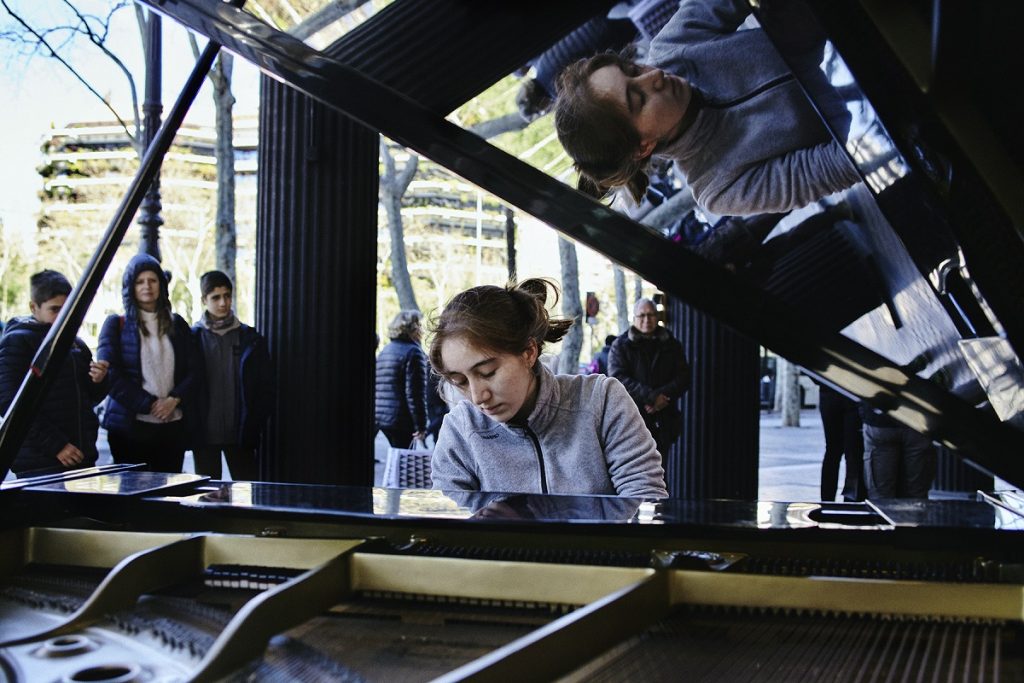
Few arts are more universally enjoyable -and with less means- than music. Today, there are many affordable (less than a ticket for the cinema) options to enjoy live music, or thanks to the recent implementation of a “reverse ticket office”, which make listeners responsibly choose, according to their own criteria, the price of the ticket to the concert they have just attended. Also, through large screens in public spaces, as has already been done with opera in cities such as Madrid or Barcelona. On the occasion of the Maria Canals Competition, in addition to the possible use of the instruments, small recitals will be offered in the evenings by professional pianists, for free.
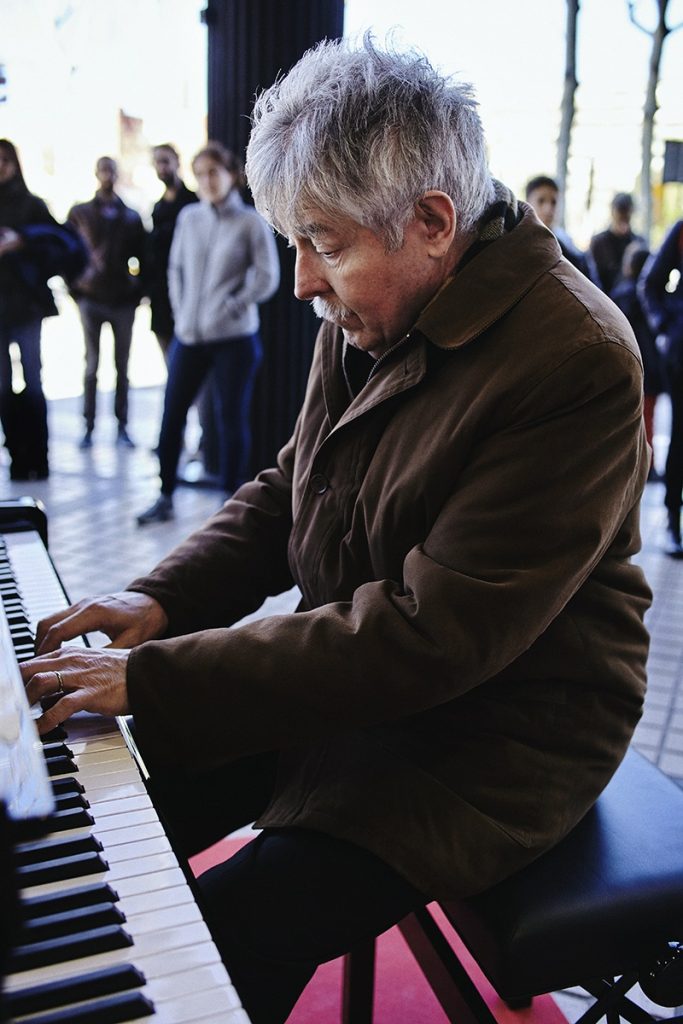
The spontaneous curiosity all children naturally show towards music, their innate ability to identify rhythms and immerse themselves in sound vibrations, is confirmed once again with the surprise installation of pianos. Something that is also proven in the increasingly frequent concerts for all audiences, or child audiences (for example, we recently saw Big Bang Beethoven at the Palau or the screening of the film ET with live orchestral accompaniment at the Auditori). The direct perception of musical fact, gestated in proximity to the listener and unrepeatable -music played live, which may seem older- actually gives rise to astonishment.
Those who have always been used to automated reproduction, to an impersonal interpretation, are surprised to discover that music is made by a musician for the occasion. They feel how music questions them with an unknown language, which they nevertheless understand. Thus, the piano invasion not only aims to promote the Maria Canals Competition, in agreement with the Palau de la Música. Its most important role lies in reminding music belongs to everyone and is for everyone. The pretext of distance or lack of training can become a pre-text: an optimal occasion to discover the originality of a language that, in effect, offers us tools to connect with our origins.

